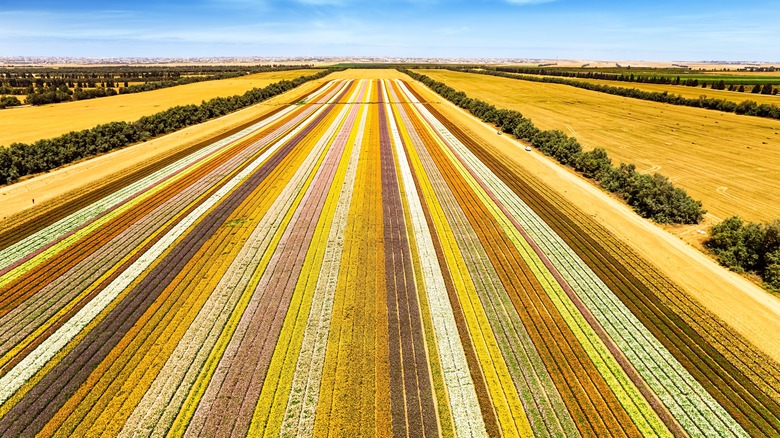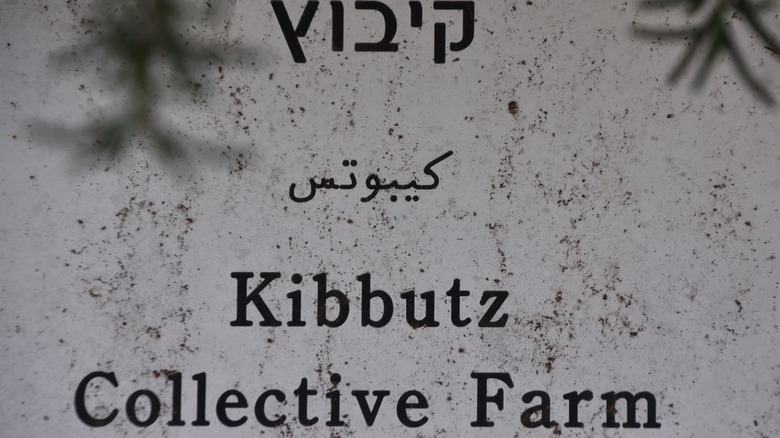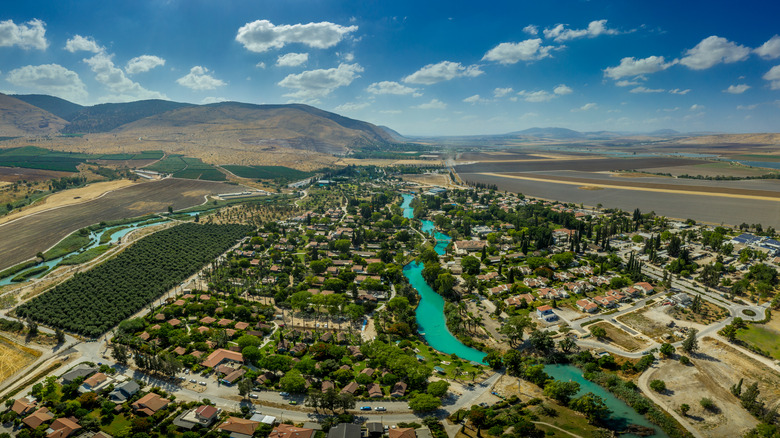What Is A Kibbutz Community?
Long before the state of Israel became a reality in 1948, there were groups of European Jews who established farming communes in what was then known as Palestine. In October 1910, 10 men and two women, mainly from Russia, some in their teens, arrived on the East Bank of the Jordan River and established a community where they could work the land and live by common consent, according to "The Kibbutz: Awakening from Utopia" and the Center for Israel Education. They eventually took the name "Degania" — based on the Hebrew word for "grain" as well as the name of a local cornflower — for their new venture.
While there had been previous attempts at collective farming by other Jewish settlers — including on the land that the Degania settlers leased — because of its nearly immediate success, Degania became the model for the kibbutz movement in the coming decades. "Kibbutz" is Hebrew for "gathering" or "collective," according to Britannica. And as the word "collective" suggests, the residents of a traditional kibbutz hold their property in common and work and live together.
Living and working together
A traditional kibbutz revolves around agriculture or industry. After providing for the needs of its members, the profits are rolled back into the collective. In the early days of Degania, the members gave all their possessions to the kibbutz when they joined and even split any gifts they might receive from the outside, according to "The Kibbutz: Awakening from Utopia." While the adults generally have their own quarters, the children live together in a separate dormitory with meals held together. The members of a traditional kibbutz make all decisions together via weekly meetings.
Today, there are around 270 kibbutzim (the plural of kibbutz) in Israel, with more than 100,000 members, per the Jewish Virtual Library. And while kibbutzim have a lot of commonalities, they are not all alike. "They are religious and secular, atheist and agnostic, Marxist, liberal, and social democratic," Daniel Gavron writes in "The Kibbutz: Awakening from Utopia." "They are populated by immigrants and native-born Israelis, people of European origin, Americans, and those who hail from Asia and Africa."
Tradition versus modernity
Most kibbutzim have libraries, cultural centers, and office buildings, and many have swimming pools, public gardens, and even concert halls, per "The Kibbutz: Awakening from Utopia". Traditionally, the Kibbutz Movement based its communal work ethic on the idea of "from each according to his ability, to each according to his needs," according to the Jewish Virtual Library. But in the 1990s, a new model arose in which capitalism and the use of paid workers rather than community members became prevalent.
Today, only about 60 of the country's 270 kibbutzim are still cooperatively run communes, per The Jerusalem Post. Beyond that, only 30 use volunteer agricultural workers, instead heavily relying on laborers who are mainly from Thailand. "Now that the capitalist way of life is the way of life in Israel, the kibbutzim are influenced by that and respond to the surroundings of their environment," Shlomo Getz, the former director of the University of Haifa's Institute for Research on the Kibbutz and the Cooperative Idea, told The Jerusalem Post.


